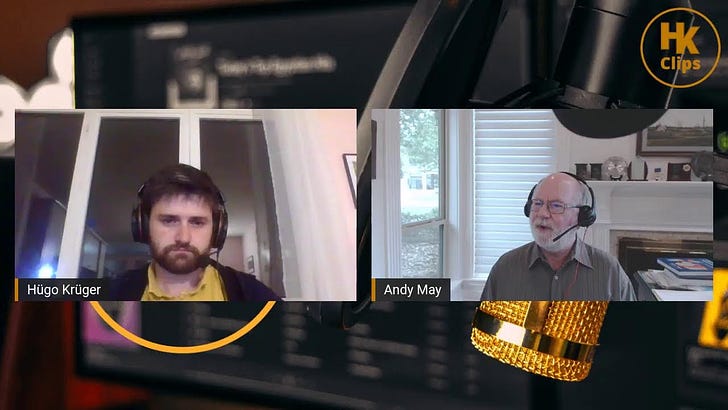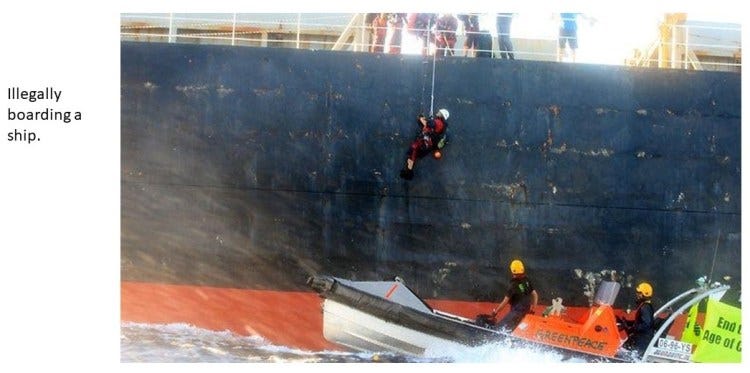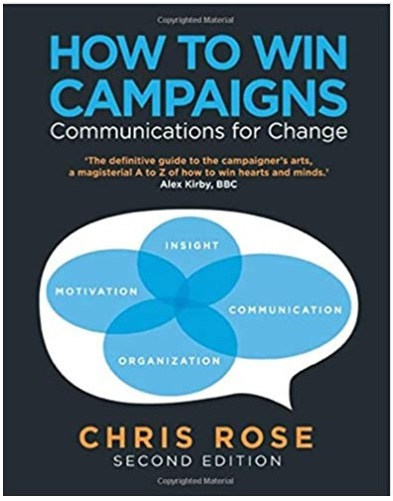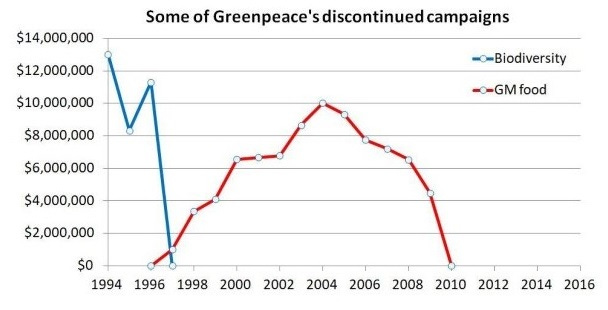Andy May is a retired Petrophysicist turned writer. Mr. May has written a lot about the environmental movement and the corruption within the various organizations of the NGO-Industrial Complex.
I had a conversation with Mr. May on his research work on Greenpeace and how the once noble organization turned into a racketeering fund whose own leaders admit to using propaganda to manipulate the public, below is a transcript of his speech.
These two books, Patrick Moore’s Confessions of a Greenpeace Dropout, my book, Politics and Climate Change: A History, and the Heartland Report on the Greenpeace business model by Michael, Ronan, and Imelda Connolly, Willie Soon, and Patrick Moore are the main sources for this talk.
Greenpeace is a Dutch campaigning business with a gross income of $386 million U.S. in 2015. Its income has tripled since the 1990s. Greenpeace had 530 employees in 2021 and assets of more than $80 million. Roughly 36% of their assets are in cash. India has frozen their Indian bank accounts, accusing them of misreporting funds and violating India’s laws against using foreign contributions to affect Indian political activities.
New Zealand rejected Greenpeace’s charitable status in 2010 and, again, in 2018, with the charitable commission stating:
The [New Zealand Independent Charities Registration Board] also considers that Greenpeace and its members are involved in illegal activities from which an illegal purpose can be inferred. Greenpeace’s illegal purpose disqualifies it from being registered as a charity.
In August 2014 the New Zealand’s Supreme Court ruled that Greenpeace could reapply to the Charities Board to be a charity. Greenpeace is clearly a political organization; however, the Supreme Court ruled that is not enough to exclude an organization from charitable status.
The court did state that illegal activity, such as trespassing or illegally boarding ships or drilling ships, is disqualifying. Greenpeace has often filmed its own illegal activities, an example is shown in Figure 1.
Vandalism and defacing public property, like the British Museum are also disqualifying. The photo in Figure 2 was taken by the New York Times in 2016.
In 2018, the board confirmed that Greenpeace had been involved in illegal activities, and it reaffirmed its 2010 decision to reject Greenpeace’s application.
Greenpeace has admitted using lying and propaganda in their regular affairs. As many Greenpeace founders have famously said:
“It does not matter what is true, it only matters what people believe is true.”
From Environmental Overkill, by Dixy Lee Ray and Lou Guzzo
Paul Watson (a Greenpeace founder) attributes this quote to Dr. Patrick Moore, another Greenpeace founder, in 1981. Others have attributed it to Paul Watson. Either way it was frequently said by the leaders of the organization. It has been sort of a mantra for them. The earliest published sources for the quote are Forbes (November, 1991) and the authoritative book Environmental Overkill by Dr. Dixy Lee Ray and Lou Guzzo, published in 1993. Dr. Ray was also the 17th Governor of the state of Washington. She was a Democrat, but critical of the environmental movement.
As for illegal activities, we all know about Greenpeace crimes, occupying drilling rigs (see here, here, here), endangering lives and property, and trespassing on private property. We also know that Greenpeace activist Paul Watson (expelled from Greenpeace in 1977) has rammed ships.

Even after Paul Watson left and as late as 2006, Greenpeace rammed ships endangering lives. In the 2006 incident, Greenpeace tried to claim the Japanese vessel rammed them. Which was a stupid claim since the Greenpeace Arctic Sunrise was damaged in the bow and the Japanese vessel was damaged near the stern, further the Japanese vessel was stationary at the time, see the Greenpeace video identified in Figure 3. But what about torturing animals for video footage? From the book Arctic Wars: Animal Rights Endangered Peoples, where Mr. Poirier, gave the following sworn testimony:
“I, the undersigned, Gustave A. Poirier, of the Magdalen Islands, declare having been employed by a group of photographers, one of which had a beard, around March 4, 1964, to skin a large seal for a film. I solemnly swear before witnesses that I was asked to torment the said seal, and not to use a stick, but just to use a knife to carry out this operation, where in normal practice, a stick is used to first kill the seals before skinning them”
Arctic Wars: Animal Rights Endangered Peoples
Documentation of this and other barbaric film fantasies distributed by Greenpeace are documented by Brian Ellison in The New American. Another propaganda film used by Greenpeace portrayed a Kangaroo being tortured in Australia. It turned out that again the torturers were paid by the film makers to do the deed. When Magnus Gudmundsson examined the evidence for these deceptions in a documentary film Survival in the High North, Greenpeace sued him. They lost of course, the paid torture was a matter of public record. But Gudmundsson was forced to pay out over $40,000 for his legal fees. After the loss Greenpeace pulled out of Norway. From International Intelligence, October, 1992:
“The final blow to Greenpeace came when it lost the libel case in Oslo that it had brought against Gudmundsson in March 1992. The chairman of the Norwegian Greenpeace, Bjorn Okern, resigned his post and stated that Gudmundsson was right about Greenpeace’s dishonest fundraising tactics, that none of Greenpeace’s money was used for ‘environmental protection,’ and that Greenpeace was an “eco-fascist” group. Okern was on the board of Greenpeace International.”
International Intelligence, October, 1992
Greenpeace crimes include possible piracy in Russia, trespassing, vandalizing Peru’s famous Nazca lines, and trespassing and destroying private property in Australia. Greenpeace activists (along with those from the Sierra Club and Tides) are a “credible threat to the health and safety” of people and the environment according to a memo prepared by the Royal Canadian Mounted Police for the Canadian government. The report also points out that:
“Those aligned with the most extreme factions use the internet to promote and instruct on the use of violent criminal techniques, including arson, vandalism, and sabotage. Demonstrated criminal activity associated to this extremist faction includes: threats to life and property, improvised explosive devices, arson, vandalism, sabotage, thefts, and break and enters, most notably in New Brunswick, Quebec, Ontario, Alberta and British Columbia.”
In essence, the RCMP has identified Greenpeace and other environmental activists as potential terrorists and has supported a law (Bill C-51, 2015) allowing them to surveil Greenpeace and other extreme environmental groups as potential terrorist organizations.
Other Greenpeace transgressions:
Greenpeace raises tons of money with their supposed “Save the Whales” campaign. But, in reality they are not opposed to whaling and even helped some Alaskan villagers tow a dead whale to their village. Some say the whale was already dead and others say the villagers killed the whale with harpoons. Either way, it was butchered by the villagers, and it was illegal for Greenpeace to tow the whale to shore. It is illegal for non-natives to participate in any step of a whaling operation according to the National Marine Fisheries Service.
Greenpeace was a leader in the attack on DDT, according to Patrick Moore’s book, Confessions of a Greenpeace Dropout, which ended its manufacture in the U.S. and elsewhere and was indirectly responsible for the deaths of millions of people, including young children, from malaria. DDT was instrumental in the eradication of malaria from the US and Europe and it could have ended this awful disease in Africa and South Asia had its production and use continued.
As Patrick Moore reports, by 2005 the outrage among health professionals, scientists, and humanitarians resulted in the formation of a campaign called “Kill Malarial Mosquitos NOW!” The campaign called for the reintroduction of DDT as an essential tool to eradicate malaria. Both Dr. Moore and Archbishop Desmond Tutu, A South African Nobel Prize recipient, soon joined the campaign (Moore, 2013). Finally, humanity prevailed, and the UN Stockholm Convention, where Greenpeace hoped to ban DDT, contained an exception that allowed DDT to be used indoors to fight malaria. DDT has been found to pose no threat to humans or wildlife.
Greenpeace is very effective at raising money, but its real strength comes from getting its claws into government agencies and the media. For example, Greenpeace exerts quite a bit of control over the Guardian newspaper via Gary Evans (a Greenpeace activist who calls himself “Bluecloud” online) among others. Greenpeace also has a lot of influence on the New York Times. The newspaper actually published a made-up press release from Greenpeace on their front page, disguised as an article by Justin Gillis and John Schwartz, without checking its veracity. The article unfairly attacked Dr. Willie Soon of the Harvard-Smithsonian Center for Astrophysics. I explain the sordid details of this episode in my book Politics and Climate Change: A History, pages 88-91. A very simple check of public records shows this article to be false. Greenpeace spends a lot of time and effort winning over journalists who give them favorable coverage and they can be vicious when they get critical coverage, often suing papers and magazines that criticize them.
The Greenpeace Business Model
As Dr. Patrick Moore writes in his excellent book, Greenpeace started out as a small group of anti-war activists trying to ban atmospheric testing of nuclear bombs. Of the original group, Moore was the only one with scientific training. While Moore became a sensible environmentalist, meaning he considered both protecting the environment and human welfare, the rest of the organization “simply couldn’t make the transition from confrontation to consensus.” They needed an enemy. When Moore realized his organization had been “hijacked” by activists that used “green language” to hide an anti-capitalist agenda, he quickly left Greenpeace.
Moore was especially disheartened that many Greenpeace environmental activists were simply anti-human, they seemed to think we are a malignant cancer on the Earth, threatening to collapse the global ecosystem. The great myth is the implied claim that we are not part of nature, when of course, we are.
As misguided as the Greenpeace recruits are, they are motivated, and they work cheap; some are unpaid volunteers. On the revenue side, the contributions keep pouring in, between 1997 to 2017 their income doubled. Currently, according to The Heartland report already mentioned on the Greenpeace business model, the main Greenpeace goal is to raise money. They shut down their Irish branch in 1997 because it wasn’t raising enough money. They laid off hundreds in the United States and fired their U.S. Executive Director for not raising enough money the same year.
Their operations and campaigns follow a formula that was developed by Chris Rose who is a strategic advisor to Greenpeace International and an expert on environmental campaigning, he literally wrote the book on it, as you can see in Figure 4.
Rose’s formula is simple, choose an environmental issue that you can label as catastrophic and urgent (manmade climate change works). Then choose a villain that can’t fight back, ideally multinational fossil fuel corporations. Next find as sympathetic a victim as possible—polar bears work. Next propose a plausible solution, like eliminating fossil fuels, and accuse the chosen villain of preventing the solution from being implemented for selfish reasons.
Next, issue a call to action. Provide ways for people to become engaged, like protest marches, face painting, or donating money, especially donating money! Finally, choose media outlets where you can control the narrative, never debate your chosen villain. Debating brings out both sides and the result is education.
Rose writes in his book on page 43 that: “Campaign communications need to roll out before an audience like a story.” He emphasizes that a sympathetic victim is required and either you (Greenpeace) or the victim must be the most empathetic figure in the story. The campaigner must not let the media fall out of love with your story.
Rose continues, “campaigning is not education.” He emphasizes that campaigns must stimulate action, narrow the audience’s focus, eliminate distractions, and reduce the options. In contrast, he notes on pages 23-25, that education expands awareness of options and complexity and shows the problem is not as simple as the audience first thought. Education reaches understanding, but not action. Questioning fundamentals and reflecting on alternatives is not how business, politics, or war advances. Rose certainly got that right.
Typically, the audience eventually does become educated on the issues that Greenpeace uses for their campaigns. As they learn about them, they find they are not as scary as Greenpeace claimed and they lose interest. Thus, each money-making campaign has a life span. In Figure 5 we see two Greenpeace campaigns that are now discontinued due to lack of interest.
Greenpeace was originally formed to fight against nuclear weapons and their testing. As nuclear weapons testing ended and the threat of nuclear war receded, they made less and less money on the campaign and eventually discontinued it in 2009 due to lack of interest and income. In the early 1990s they began a campaign that claimed humans were causing biodiversity to decline in the world. Later it was shown that biodiversity was not declining, it was just that species were moving about, and species turnover had increased. Turnover means that as species extirpate, new species evolve to replace them. It was also found that the biodiversity datasets being used were very poor.
As the biodiversity campaign wound down, Greenpeace started one on genetically modified crops. That one failed when genetically modified food was shown to be safe and beneficial. Opinions on possible future consequences of genetically modified crops differ, but currently, and after significant study, these crops are considered safe to eat. They are also nutritionally better and more pest resistant.
Greenpeace must propose a solution to the problem and furiously reject all other proposed solutions as inadequate. As an example, replacing coal with natural gas is one way to reduce CO2 emissions, as proven in the United States. But, to have enough natural gas, wells must be “fracked” which Greenpeace is opposed to. Likewise, switching from coal to nuclear power plants reduces CO2 emissions, but Greenpeace is opposed to nuclear. Hydroelectric is out because it requires dams on rivers. They work through the list of possible solutions and reject all of them except for solar, wind, and tidal power sources. All are intermittent and currently require backup by fossil fuels, nuclear, or hydroelectric since battery technology is insufficient and too expensive. Regardless of efforts by Greenpeace and other environmental organizations, the public has become aware of how inadequate these so-called renewable sources are and how impractical and expensive eliminating fossil fuels is, witness the demonstrations against a carbon tax in France.
Just this year there have been protests against high diesel prices or the lack of diesel in Argentina, Indonesia, Ecuador, the UK, and many other places. While Greenpeace will offer a plausible solution, they prefer one that cannot be implemented. If they propose a real solution, it will be implemented, and their donations will dry up.
Conclusions
In conclusion, besides news organizations, Greenpeace heavily influences the United Nations. They used their influence to try and eliminate DDT from the world as late as 2000. They didn’t back off their opposition until 2004 and then only under intense humanitarian pressure. And as we have seen above, this was a disaster for malaria-prone countries. The resulting factory closures were based upon false and distorted “science” or, more accurately, pseudo-science about the dangers of DDT. In addition, Greenpeace used horribly staged videos of torturing animals to affect public opinion so that treaties were created that destroyed legitimate businesses. It is possible, considering how much Greenpeace promoted these fake videos, that the film makers and torturers themselves were part of Greenpeace. We need to ask the question: “How did Greenpeace obtain the rights to the videos?”
Greenpeace regularly brags about the influence it has over the United Nations and United Nation agencies. Yet, in India, Greenpeace has been accused of improper influence on the government. When one considers that lying is an essential part of Greenpeace, we should be worried.
The Greenpeace campaigns to ban DDT and seal hunting based upon pseudo-science and staged torture films should be a wake-up call. Pseudo-science and made-up films showing extreme weather events are now being used to frighten a gullible public about “climate change.” This is not a new act, they have done this before. The truth matters, science-based skepticism is not evil, it is a good thing. We must be skeptical of all environmentalist’s claims and point out deceptions and propaganda whenever we see it. It is apparent that the most obvious “end of days” fantasies today come from Greenpeace and similar organizations.
It is unfortunate, but often activist environmental organizations begin innocently enough and with a good cause. Certainly, Greenpeace did. But, if successful, the problem they were formed around is eventually fixed. Then they take on a life of their own. Rather than disband when the problem is solved, they chase a new problem, or worse make one up. They exist only to maintain themselves by trading on their name to raise money. Much of the money is used to pay their own salaries, fly around the world to conferences, and influence journalists and politicians. It becomes an ugly business, feeding off businesses that actually make things. They are not charities; they are hidden taxes on the public.
Why do organizations like Greenpeace lie about environmental dangers that clearly do not exist? Their lies about the dangers of climate change, DDT, genetically modified foods, and biodiversity are very easily dismissed, since they have no basis in observations or in “the science,” as the news media like to say.
In 1971 Dr. Patrick Moore (his PhD is in Ecology) and a friend, Bob Hunter, were part of the crew on the boat they chartered to protest nuclear bomb testing in Alaska. On the long voyage home to Vancouver, they had a conversation, and Bob Hunter made the following very prophetic statement, according to Patrick Moore’s book: Confessions of a Greenpeace Dropout:
“Pat, this is the beginning of something really important and very powerful, … But there is a very good chance it will become a kind of ecofascism. Not everyone can get a PhD in ecology. So, the only way to change the behavior of the masses is to create a popular mythology, a religion of the environment where people simply have faith in the gurus.”
Moore, 2013
Moore then reflects: “Today I shudder at the accuracy of his foresight.”
If you replace “gurus” with “the science” Bob Hunter nailed the world of today. The scientific gurus of today are not those of my youth. Today they have been corrupted by politicians, the news media and organizations like Greenpeace. People around the world know this. In Chapter 21 of Moore’s book he lists a number of polls that show the public is not convinced of the dangers that politicians and Greenpeace espouse. They tried to lie about the dangers, in order to make money from donations, but failed. The truth came out, as it always does, and their credibility was destroyed, as it always is when you lie. But somehow, they continue to make money, I guess a fool is born every minute, as Paul Evans and Paul Parnes wrote in 1968. They will never get a majority with their lies, but they don’t need a majority to make money.
This is an updated version of a 2016 post, to see the original go here.






